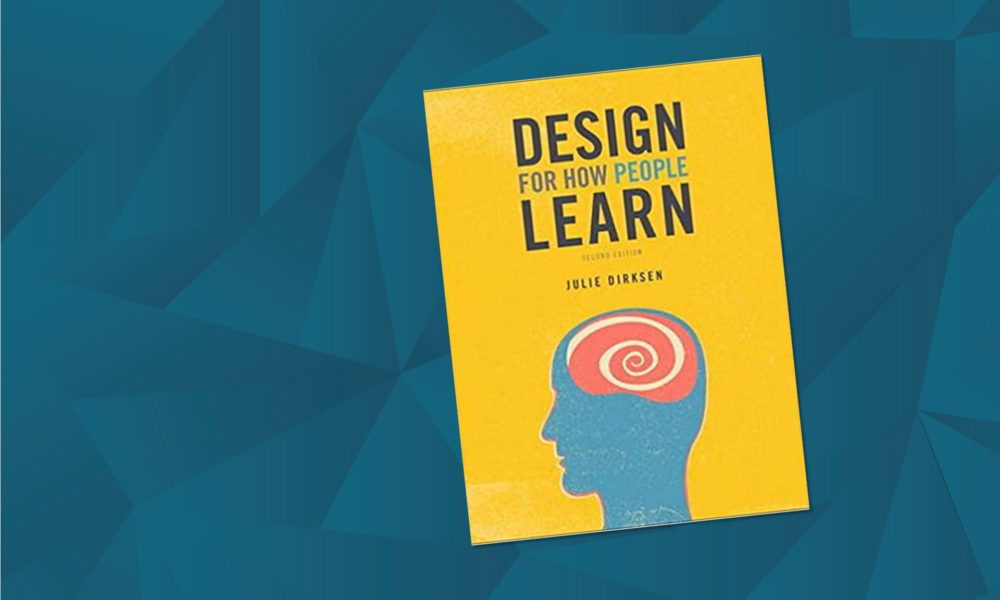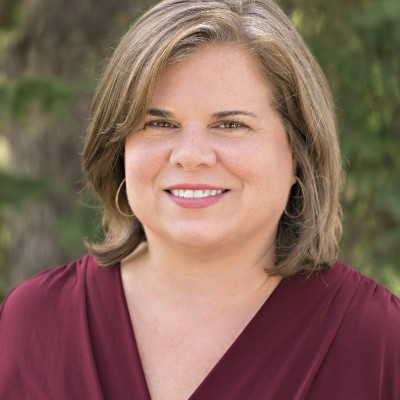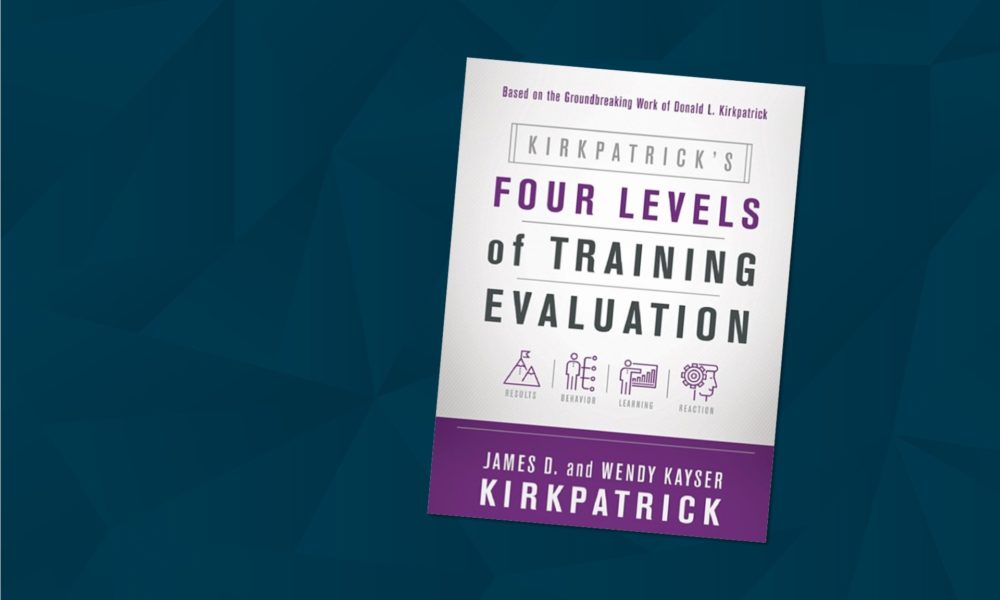Episode 115: April Terry on Adult Learning Techniques to Drive Engagement
2.7K Views | 21 Min Read
Shawnna Sumaoang: Hi, and welcome to the Sales Enablement PRO podcast. I am Shawnna Sumaoang. Sales enablement is a constantly evolving space and we’re here to help professionals stay up to date on the latest trends and best practices so that they can be more effective in their jobs. Today, I’m excited to have April Terry from Planview join us. April, I would love for you to introduce yourself, your role, and your organization to our audience.
April Terry: Hi. Hello everyone. Thank you so much for having me here today. I’m really excited to talk about my learnings at Planview. I am currently in Music City, USA, Nashville, Tennessee, and am the learning and development manager at Planview. Planview is the leading portfolio and resource management company and we help companies deliver on their strategies through empowering their teams, no matter how they work. So, like I said before, I’m running learning and development and really focusing on revenue enablement and supporting our revenue enablement functions. So that’s our sales, our reps, SDRs, AEs, solutions, consultants, customer success managers, as well as strategic account managers, and that’s a global team. I’ve been doing that for three years, doing a lot of work with onboarding and developing programs and really was at the start of the learning and development function at Planview.
So, a little bit about me in work. Personally, I love travel and music. I’ve got a yearly bucket list. This year is 20 new experiences in 2020, and experiencing a pandemic is definitely a big one. The other years were 18 concerts in 2018 and 19 cities in 2019. So, if you love travel and music, please reach out and hit me up. I also love volunteering with school children, and I coached track, as well. So that’s a little bit about me.
SS: April, I’m so excited to have you. And that sounds like a very clever way to execute every year, and the pandemic was new for most of us. We’re really excited to have you. So, you talked a little bit about your work in revenue enablement, and you also have a very unique experience as a schoolteacher. So, how do you apply some of the skills from classroom teaching to your learning and development work at Planview?
AT: Yeah, well, you know, there are a ton of things that you can take from the classroom, especially around engagement, and assessment, repetitions, and probably a lot of patience too, I think. But the biggest takeaway, and I think skill that I’ve gotten from the classroom in this role is lesson planning. And that’s beginning with the end in mind. So, when we did a lesson plan or taught on how to do a lesson plan the very first thing that we had to do was fill out what the standard, the skill, competency that we were teaching was, as well as the assessment. How would we be able to truly see or hear that the student has understood and grasp this concept? They’ve mastered the skill. So, beginning with the end in mind and being able to a lesson around that I think is a huge skill.
What I see in my role sometimes and in businesses, we get so caught up with just the transfer of information and just the fact that it’s brand new, and everybody has to know it, that sometimes we neglect or forget the objective and the goal that we’re trying to reach. At the end of the day, I don’t really care, we don’t really care as much about what somebody knows, what’s just stuck in their head. We care about what they can do with that information, right. The things that we can see and hear.
As a track coach, if you came to me and said, “Hey, April, teach me shot.” I would say, “Okay, what’s your goal?” Because if you said, “I want you to teach me the shot put, because I want to understand what’s going on at my cousin’s track meet and support them,” is so much different than, “Hey, I want to be an Olympian, so teach me” or, “Hey, I want to be an official.” Depending on what your goal is, we’re going to have a different lesson or I’m going to have a different approach so I can get you to your end goal. So, in enablement, I think it’s important for us to remember that if we’ve got a new product launch, it’s very easy for us to just dive right into here’s the feature and the value and the pricing and the upcoming marketing campaigns and just sharing a lot of information.
We really have to take a step back and think about the goal first, at the end of this presentation or when this information is distributed, what should a rep be able to do? What should that audience be able to do? Are we doing this just for awareness? Do they need to be able to pick up the phone tomorrow and articulate this value? Do they need to be able to demo something? Right? Well, we’ve got a clear understanding of where we’re headed and the goal, we can adjust our presentations and as a teacher, we would adjust the lesson to ensure that everything was adding up to provide plenty of practice and reinforcement to get us to our end goal. So, lesson planning and beginning with the end in mind is certainly the biggest takeaway that I’ve had from the classroom into this enablement role.
SS: Fantastic. In your experience, how does adult learning differ from learning aimed at children? What are some of the strategies that you use to kind of help engage an audience of adult learners in your program?
AT: So, one of my favorite books is Design for How People Learn. And in that book, there’s a great model for how our brains work and that our brains are shelves. So, I’ll use that model. With children, children are empty shelves, they are sponges, they are empty bookshelves just waiting to be filled. And for the most part, they look to a teacher or a parent and they immediately trust what’s coming out of their mouth. They don’t have as much maybe to contradict, right? They’re empty bookshelves, they’re just open vessels waiting to learn everything about the world. In contrast, adults are filled bookshelves. When you present information to an adult, they’re kind of choosing what to take in because they have so many books and information on their shelves already.
So, I think that the biggest difference here is that children again are open and they’re ready for all of this new information and they’re empty vessels. Whereas adults, we already have a lot of information and sometimes we’re like packed to the brim with social media and everything else, it’s just so much going on that we’re not empty vessels. And the approaches that you have to take with an adult versus with a child is it’s very important that you understand maybe some pre-knowledge or you understand where an adult is coming from, what existing knowledge do they have and how is the new information that I’m going to share, maybe connect with that existing knowledge? Again, we’ve got a lot of books on our bookshelves, so if we’re able to tie this new piece of information is going to fit perfectly on that bookshelf, we’re able to get people to retain and be open for that information. Whereas with children, we could put a lot of things on their bookshelves, they’ve got plenty of room and they don’t have anything maybe to combat new information.
I also think that you have to put your pride aside in that just because maybe you have authority. Sometimes we think somebody is just going to immediately listen and take in what we’ve got to say, that happens a lot with children and in the classroom. But with adults, in your brain, literally the synapses in your brain don’t care as much about authority as they care about connecting info, right? What is this new piece of information? How does that relate to the things that I already know? So, I think that if you are being engaged, not taking yourself too seriously, poking fun at yourself. I think that’s actually some similarities in between children and adults, but I think the biggest thing is that pre-knowledge and this idea of open, empty vessels versus kind of filled bookshelves. Adults, we’ve got a lot already in our heads, and so, it’s almost as if you have to, I don’t want to say, sell this new information or get buy-in but this is worth your time to take in this new information, that’s what I would say is the biggest difference.
SS: I love that. And I love that book. We actually interviewed Julie for our book club podcast. She’s fantastic.
AT: Oh Great. Yeah, she is.
SS: I think along with a lot of the challenges that come with trying to help adult learners, retention always comes up as one of the biggest challenges. So how do you help encourage retention of the skills and knowledge that’s taught in your learning programs?
AT: Yeah. So, we all know that retention is very, very important but the reinforcement of that is key, right? And I think not only the reinforcement just through a multiple-choice quiz but having it in a real-world scenario is very important. So, one thing that we’re doing currently with our customer success team is we’re doing group live trainings at the beginning of the week. And then in the team meetings, throughout the week, there are small quizzes and concepts that the teams are individually going through. And those quizzes are yes, quizzes, but they are real-world scenarios. We’re taking situations that they have been or things that they’re going to be presented with in the future and weaving some of those new concepts in. So, I’m very much a big proponent and always asking, “what does this look like in real life?” And when you’re talking about reinforcing and making sure that we’re not forgetting and following that forgetting curve, being able to apply and giving people an opportunity to apply this new information in a real-world scenario helps with the retention of that information.
SS: Absolutely. Now, obviously, everyone doesn’t come into a learning program at the same level. They come from different backgrounds or knowledge or have certain skills from their past. So, how do you account for the different needs learners might have in the design of your program to kind of help with those different skill, knowledge, or experience gaps?
AT: Yeah, absolutely. I think a big thing is giving folks an out when they need it. If we’ve already established that they’ve got mastery over something, we don’t want them to spend a ton of their time doing things that they already know. So, you know, one example in one of the courses that we built was exactly an opt-out opportunity where we provided, I talked about those real-world scenarios before ,we provided a real-world scenario, a few real-world scenarios, and they were able to test out of that section. And if you missed some of those key concepts within that scenario or questions, then it was an open, “Okay. You probably should go back in and really look into this,” and, you know, watch the rest of the video or whatever. So, I think giving people the opportunity to opt-out of things, that they’ve already mastered really helps with engagement within a course.
SS: Absolutely now I want to pivot ever so slightly because, you know, as we started off in the podcast, we are in a radically different world this year and a lot of things have had to go remote or virtual if you will. So, what are some considerations that sales enablement practitioners need to keep in mind when having to now conduct this learning and this training all virtually.
AT: You know, I think the biggest thing is engagement and excitement, and that probably is coming from you, or whoever is presenting. So, I think there is so much value in just being excited about what you’re presenting. We’re all, like you said, kind of zoomed out, fatigued and this, that, and the other. But really being excited about what it is that we’re presenting and bringing that enthusiasm and passion into everything that we’re explaining, I think is a small thing that goes a very long way. So that’s one huge thing, and it’s an easy thing to implement, right? Just being excited about what you’re presenting and getting our subject matter experts, or our presenters excited about what they’re talking about and providing that energy.
The second thing I think is to give people breaks. You know, sometimes we’re very quick to fill the silence, and not pause and let people process information or take time to come up with questions. We have just a few minutes or moments of silence and we want to fill it, but I think being able to step back again and just give people a break to process information, is also something to keep in mind with conducting training virtually. And I mean in-person as well, but, certainly virtually too.
SS: I think those are two fantastic tips, April. I really enjoyed this conversation. I always tend to close on this because I think at the end of the day, we all want to know what good looks like. So, I’d love to understand from you in closing, how do you measure the impact of your learning and development programs?
AT: Right. So, you know, also beginning with the end in mind, and we are doing these programs because we’re looking for changes in behavior typically, and what it is that we’re solving for. And I like to think about Kirkpatrick’s training model in Training Evaluation. So, in that model he talks about first, reaction. Second, learning. Third, behavior. And fourth, result.
So, number one, measuring the reaction, did people find this training enjoyable or relevant? If people aren’t finding your training enjoyable or relevant, you can kind of through retention out of the window, right. When was the last time that you walked away from a monotone speaker and thought like, “Whoa, that was riveting. I’ll remember all of that.” That engagement piece is very key. And so, we’ve got to assess, and keep that as a metric. How did people react to it? Did they find it enjoyable? But we also know that we can’t stop there. Right? We, we can’t just stop at, did they like it or not? We want to know if it was effective.
So, the next thing, learning and understanding may be how confident these folks are in their understanding of the information and did they acquire the information? So, a great way to assess this would be through self-assessments. That’s another schoolteacher trick that I picked up is doing pre and post-assessments. And these are really easy to do in your program. So at the beginning, maybe of a presentation doing a one to four scale, I don’t like using fives because you’ll get neutrals, but saying on a scale of one to four, if you had to teach this to a new rep, how confident would you be? On a scale of one to four, how confident would you be before this presentation? And then after, asking that same question and hopefully you’re seeing some trends, right? That you came into it at one level, but now we’re leaving more confident.
That kind of brings us into the next level of behavior. So, while number one, it’s good that people are enjoying it. Number two, it’s good that people are feeling more confident. We can’t just rely on self-assessment because we’ve all heard people that they can sing, but really should leave it to the professionals. So, sometimes we’ve got good self-assessments, but behavior is really what we’re looking at. And in level three, the behavior is asking, so how can our reps apply what they’ve learned on the jobs? Right? So, I mentioned the situational questions at play. That’s a great way to see, are you able to take this new concept and apply it to a different situation or maybe recording a pitch to the customer and going back and listening to it, right? This is what things, and what changes can we see are here within the behavior.
And then finally, we’re doing all of this work and changing our behaviors because we want to see a different result. So, within this final level and the result stages, we are really tying the impact of changes to behavior to metrics in the business. We talked about beginning with the end in mind, right? That’s the whole reason why we’re doing a lot of these programs. So, now that we understand that people are finding it enjoyable, right? They’re engaged, they feel maybe more confident about the lesson or the subject now, before they came in, and went through the program. We’re seeing changes in behavior. Now we’re asking, what does that look like in the context of our business?
So, if we did a training on how to write eye-catching, email subject lines, and our reps are changing their subject lines. Now we go into the data and we look at our open and close rates, right. Those are the numbers and the data and the results that we are looking for. And I think it’s important with behaviors and looking at that we’re looking for patterns and correlation. So not every increase and decrease are maybe a direct result of your training, but we can certainly see patterns within them, and we can look back at the data and if our numbers or whatnot aren’t looking where we want them, we can dive into that, and really pull out some different nuggets or areas that we should focus on and start this whole process again, building a training program that number one gets good reactions, number two helps people feel more confident, number three, leads to a change in behavior, and then number four leads to new results when we’re looking at our data and the metrics.
SS: That was fantastic, April. I have greatly appreciated this conversation. Thank you so much for joining us today.
AT: Yes. Thank you so much for having me and I am a big fan of Sales Enablement PRO and all of the work that you do.
SS: Well, thank you so much. To our audience, thanks for listening. For more insights, tips, and expertise from sales enablement leaders visit salesenablement.pro. If there’s something you’d like to share or a topic you’d like to learn more about, please let us know. We’d love to hear from you.













